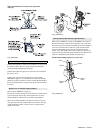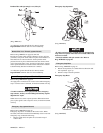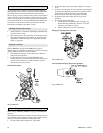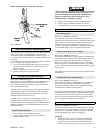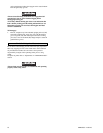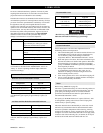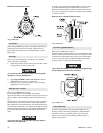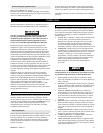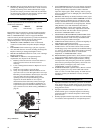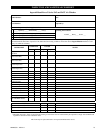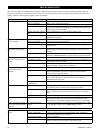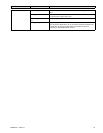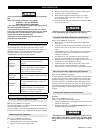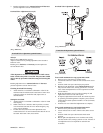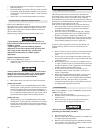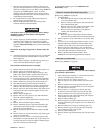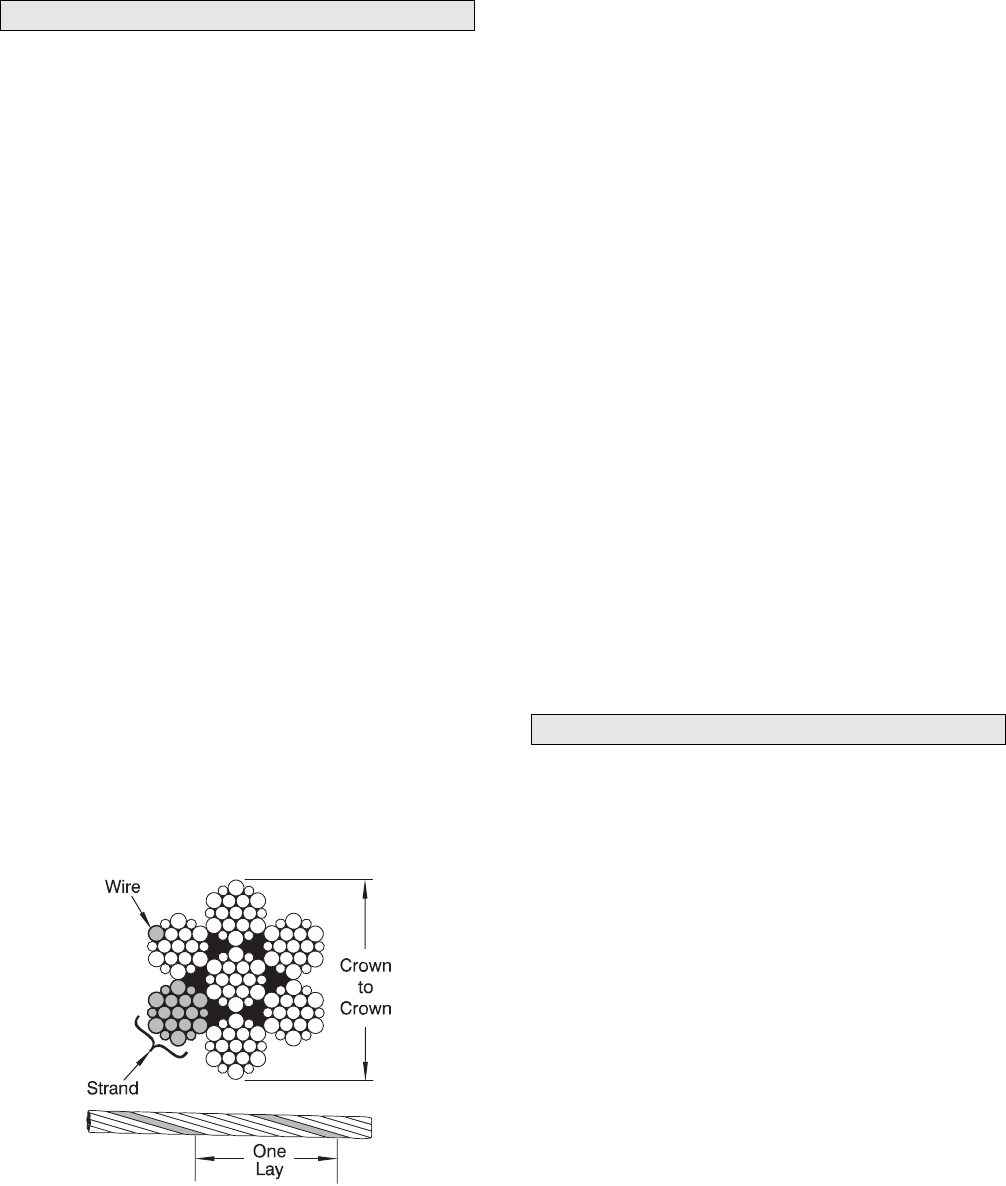
22 MHD56037 - Edition 5
10. MOTOR. During operation check motor housing for excess
heat build up. Housing should not be hot to touch. Listen for
grinding or knocking noises. Ensure lubricated air supply
provides 6 to 9 drops per minute of ISO VG 32 (SAE 10W)
oil when winch is operated at rated capacity. Operate winch
slowly in both directions to verify operation.
Periodic Inspection
Periodic inspection intervals for winch use under various
conditions is listed below:
Disassembly may be required as a result of frequent inspection
findings or in order to properly inspect individual components.
Refer to “MAINTENANCE” section
on page 26. Maintain
written records of periodic inspections to provide an accumulative
basis for continuing evaluation. Inspect all items listed in
“Frequent Inspection.” Also inspect the following:
1. SIDE RAILS AND UPRIGHTS. Check for deformed,
cracked or corroded main components. Replace damaged
parts.
2. FASTENERS. Check retainer rings, split pins, capscrews,
nuts, and other fasteners on winch, including mounting bolts.
Replace if missing or damaged and tighten if loose.
3. DRUM AND SHEAVES. Check for cracks, wear or damage.
Replace if necessary.
4. WIRE ROPE. In addition to “Frequent Inspection”
requirements, also inspect for the following:
a. Build-up of dirt and corrosion. Clean with steam or a
stiff wire brush to remove dirt and corrosion if
necessary.
b. Loose or damaged end connection. Replace if loose or
damaged.
c. Check wire rope anchor is secure in drum.
d. Verify wire rope diameter. Measure diameter of wire
rope from crown-to-crown throughout life of wire rope.
Recording of actual diameter should only be done with
wire rope under equivalent loading and in same
operating section as accomplished during previous
inspections. If actual diameter of wire rope has
decreased more than 1/64 inch (0.4 mm) a thorough
examination of wire rope should be conducted by an
experienced inspector to determine suitability of wire
rope to remain in service. Refer to Dwg. MHP0056
on
page 22.
(Dwg. MHP0056)
5. ALL COMPONENTS. Inspect for wear, damage, distortion,
deformation and cleanliness. If external evidence indicates
damage, disassemble as required to conduct a detailed
inspection. Inspect gears, shafts, bearings, sheaves, springs
and covers. Replace worn or damaged parts. Clean, lubricate
and reassemble.
6. BRAKES. Individually test brakes installed to ensure proper
operation. Brakes must hold a 125% rated load at mid drum
without slipping. If indicated by poor operation or visual
damage, disassemble and repair brake(s). Check all brake
surfaces for wear, deformation or foreign deposits. If brake
lining thickness is less than minimum as described in
“MAINTENANCE” section replace brakes. Clean and
replace components as necessary. Adjustments cannot be
made to disc brake. The disc brake must be repaired as
described in “MAINTENANCE” section.
7. FOUNDATION OR SUPPORTING STRUCTURE. Check
for distortion, wear and continued ability to support winch
and rated load. Ensure winch is firmly mounted and that
fasteners are in good condition and tight.
8. LABELS AND TAGS. Check for presence and legibility of
labels. Replace if damaged or missing.
9. LIMIT SWITCHES (optional feature). Operate winch in
both directions to activate limit switches. Limit switches
should engage (stop winch operation) at established settings
(+/- 2 feet [+/- 0.6 metres]). Reset limit switch by operating
winch in opposite direction. Refer to ‘Limit Switch
Adjustment’ in “MAINTENANCE” section.
10. DRUM GUARD (optional feature). Verify fasteners are tight
and in good condition. Ensure guard is in good condition.
11. EMERGENCY STOP VALVE (optional feature). During
winch operation verify emergency shut-off valve operation.
Valve must stop winch operation quickly. Valve must reset
properly. Refer to ‘Emergency Stop Valve’ in the
“OPERATION” section for procedures.
12. OVERLOAD DEVICE (optional feature). Ensure overload
device is properly set to stop winch when load exceeds
150% (+/- 25%) of winch rated capacity. If winch does not
shut down, contact your distributor or factory for repair
information.
Winches Not in Regular Use
1. Equipment which has been idle for a period of one month or
more, but less than six months, shall be given an inspection
conforming to requirements of “Frequent Inspection” before
being placed in service.
2. Equipment which has been idle for a period of over six
months shall be given a complete inspection conforming
with requirements of “Periodic Inspection” before being
place in service.
3. Standby equipment shall be inspected at least semi-annually
in accordance with requirements of “Frequent Inspection”.
NORMAL HEAVY SEVERE
yearly semiannually quarterly



